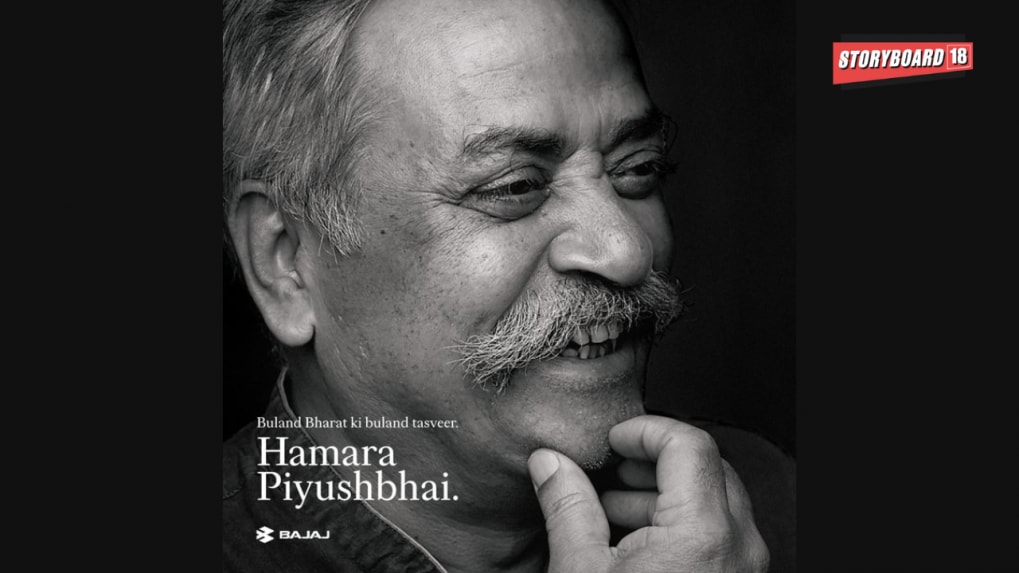Fault lines in a tribute: What Bajaj's tribute ad for Piyush Pandey reveals about corporate marketing
A tribute ad by Bajaj Auto for Piyush Pandey drew criticism from an industry veteran for reusing the iconic “Hamara Bajaj” line originally created by rival agency Lintas, exposing a deeper lapse in marketing authenticity and legacy awareness.
ADVERTISEMENT
When advertising legend Piyush Pandey passed away on 24 October 2025, at the age of 70, the Indian business-and-creative community mobilised in tribute.
One industry post, however, stood out not just in homage but in critique: a LinkedIn message by Ram Prasad Krishnan, founder & principal consultant of RP Krishnan Consulting, who called into question a tribute ad placed by auto major Bajaj.
In a candid LinkedIn post titled “Marketing Myopia”, Krishnan argues that the tribute, while technically flawless, committed a conceptual mis-step so glaring it bordered on irony. The advertisement in question for “Hamara Piyushbhai” lifts the iconic 1989 jingle “Buland Bharat Ki Buland Tasveer – Hamara Bajaj” from Bajaj Auto’s legendary campaign by Alyque Padamsee and Lintas. Krishnan’s critique is blunt: given that Padamsee’s team conceived that jingle (and the associated “Hamara Bajaj” brand identity) decades ago — long before Pandey’s ascendancy — the tribute mis-allocates authorship and in doing so unwittingly undermines the very hero being honoured.
The juggernaut campaign behind the misstep
The argument rests on historical fact. The “Hamara Bajaj” campaign launched in 1989 helped summit Bajaj Auto’s brand into the consciousness of a rising India. The jingle “Buland Bharat Ki Buland Tasveer” still resonates with millions.
Padamsee and his team at Lintas wrote and produced the ad; Krishnan’s post insists Bajaj and the agency failed to grasp the “irony, if not a faux-pas” in repurposing that line in tribute to someone who wasn’t its originator.
Krishnan writes:
“Surprised even the agency creating the ad missed this irony, if not a faux pas... Technically there is nothing wrong with the ad. But aren’t you missing out on a screaming nuance?? So symptomatic of a present era in marketing and advertising where education and scholarship bow at the altar of expediency and snaring of eyeballs.”
In effect, the complaint is two-fold: one, that corporates these days often lean heavily on recognition value and “iconic” lines without digging into the legacy behind them; and two, that such strategies in the name of tribute risk doing injustice to the subject of homage. In this case, the ad honours Pandey — who indisputably left an imprint on Indian advertising — but by leaning on a campaign he did not create, it dilutes both his legacy and the origin of the jingle.
Why the critique cuts deep
Pandey’s own legacy is unbeatable. He spent over four decades with Ogilvy India, reshaping the way Indian advertising spoke — in vernacular, nuance and cultural rootedness.
He championed ideas grounded in everyday India rather than lifting Western templates. Yet the tribute ad’s reliance on another icon’s work suggests a willingness to trade depth for quick-link recognition. It illustrates what Krishnan calls a “present era… where education and scholarship bow at the altar of expediency”.
For marketers this raises three serious questions:
Whose legacy are you actually honouring? If you lean on someone else’s creative asset, you risk overshadowing the person you intend to celebrate.
Does the message pass the subtle test of credible alignment? Tribute ads aren’t just about presence; they’re about authenticity. If you adopt another icon’s voice or line, the risk of mis-alignment is high.
Are you treating the audience as discerning? The memory of campaigns, tag-lines and cultural touchstones is heightened among seasoned marketers and consumers alike. The omission of context or attribution can be read as sloppiness.
Krishnan’s post does more than critique one ad — it holds up a mirror to corporate marketing culture today. One where:
Speed, recognition and viral potential compete with scholarship and nuance.
Legacy becomes a badge rather than a story to be re-told carefully.
Tributes exist not purely as remembrance, but as brand-surface opportunities.
For Bajaj Auto, a company that once ran one of India’s most emotionally resonant brand campaigns, this misstep is instructive. It suggests that even brands with strong foundational heritage risk stumbling if they don’t pair mechanics with memory, and recognition with rightful attribution.
A small but telling irony
Krishnan adds a twist in his post:
“Probably, it would have been more befitting for Bajaj to have put out this eulogy ad on the passing of the G.O.D of advertising, Alyque Padamsee, some years back.… And thought of something more appropriate and lyrical for a legend like Piyush, who definitely must be squirming up there at what can best be called poetic injustice!!”

